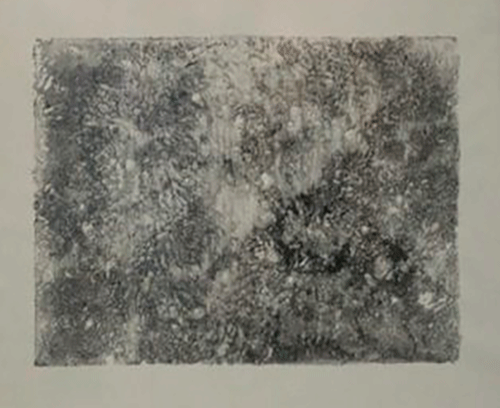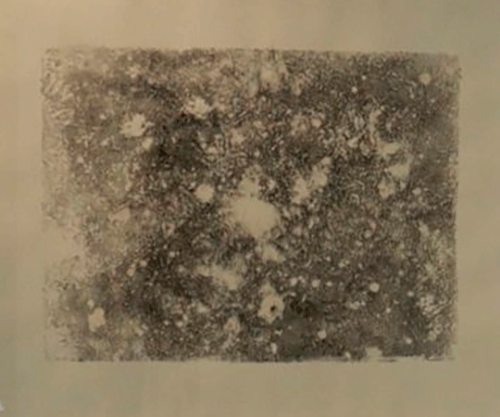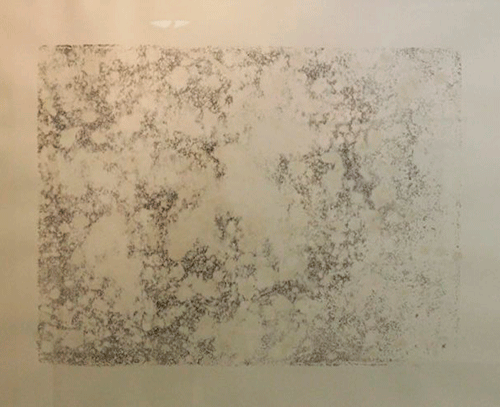Where is the end?

Presence, 2019
74 x 98 cm.
Paper and graphite powder on paper.

A#2, 2019
120 x 141 cm.
Paper and graphite powder on paper.

A#3, 2019
120 x 141 cm.
Paper and graphite powder on paper.

A#4, 2019
120 x 141 cm.
Paper and graphite powder on paper
Carolina Rocha is a visual artist whose starting point is experimentation, the relationship between action and matter, and the questions that the process provokes in her. It is from this interaction that her ideas and strokes precipitate – in the chemical sense of the word – until they transform into premises.
Carolina welcomes accidents, assuming that the result is a product of chance, thus becoming unrepeatable and unique. She allows an uncontrolled, fortuitous variable to play a role in her creation. It’s her way of privileging the process.
An introductory consideration: understanding that replicas are not copies. Each one results from a gesture (action), a stimulus, at a certain moment. And it is time that determines the integrity of the impression.
There is a poetic beauty in the impossibility of repetition. This singularity is an identity.
It is well known that time is a renowned sculptor. It has already starred in numerous cinematic and literary works and still exists in everyday life.
Where is the end? Carolina asks.
This process resembles the mechanisms of memory.
In the exercise of resorting to our mental sedimentation, we obtain different impressions over time: a fresh memory is vivid and fades away. Images with increasingly tenuous, less vigorous, and precise cadences are referred back to the original. Allowing the stimulus to dry up allows them to fade away. Just like the end that Carolina omits.
I would say, in the end, we will have a paper once again white, unimpressionable. The impression only exists if there is substance, that is, presence.
Does she want to remember the finitude we confront? And with that, the likelihood of disappearing from the memory of those who remain, until there is no trace of our passage on earth? Is it an appeal to revisiting memory, the only catalysis that will enable the maintenance of active substance?
The title “presence” that Carolina gives to the original provides a clue, like an old photograph we fortuitously find in a book. The importance of the trace in memory.
On a broader level, one could enhance reasoning about collective memory in terms of preserving our historical and emotional heritage and enabling it to continue to make impressions.
Text by Sara Leal published in the magazine Grotta – Archipelago of Writers, 2021/2022.